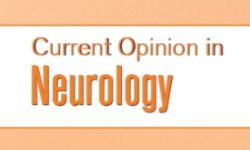
“Gastroparesis (Gp) can be a challenging disorder to manage due to the paucity of treatment options. We do not know how frequently patients with Gp symptoms resort to cannabinoids to address their symptoms. This study (i) determines the prevalence of cannabinoid use in patients with Gp symptoms, (ii) describes the patients with Gp symptoms using cannabinoids, and (iii) assesses the patients’ perceived benefit of cannabinoids for Gp symptoms.
METHODS:
Consecutive outpatients with symptoms suggestive of Gp seen on follow-up at our academic center from June 2018 to September 2018 filled out questionnaires on their symptoms and the current treatments.
RESULTS:
Of 197 patients, nearly half (n = 92, 46.7%) reported current (35.5%) or past (11.2%) use of cannabinoids, including tetrahydrocannabinol (n = 63), dronabinol (n = 36), and/or cannabidiol (n = 16). Of these, most perceived improvement in Gp symptoms from cannabinoids (93.5% with tetrahydrocannabinol, 81.3% with cannabidiol, and 47.2% with dronabinol). Cannabinoids were used most commonly via smoking (n = 46). Patients taking cannabinoids were younger (41.0 ± 15.4 vs 48.0 ± 15.9 years; P < 0.01) and had a higher Gastroparesis Cardinal Symptom Index total score (3.4 ± 1.0 vs 2.8 ± 1.3; P < 0.01) compared with patients with no history of cannabinoid use.
CONCLUSIONS:
A third of patients with Gp symptoms actively use cannabinoids for their chronic symptoms. Most of these patients perceive improvement in their symptoms with cannabinoids. Patients taking cannabinoids were younger and more symptomatic than those not taking cannabinoids. Further studies on the efficacy and safety of cannabinoids in Gp will be useful.”
https://www.ncbi.nlm.nih.gov/pubmed/30865015
https://journals.lww.com/ajg/Abstract/2019/06000/Cannabinoid_Use_in_Patients_With_Gastroparesis_and.23.aspx
 “Migraine is a common, highly disabling disorder. Its treatment involves acute and preventive therapy. Many of available preventive medications are not well tolerated, which results in poor compliance and limited effectiveness. Cannabinoids have been proposed for the treatment of migraine but their efficacy and tolerability are controversial.
“Migraine is a common, highly disabling disorder. Its treatment involves acute and preventive therapy. Many of available preventive medications are not well tolerated, which results in poor compliance and limited effectiveness. Cannabinoids have been proposed for the treatment of migraine but their efficacy and tolerability are controversial.






 “Neuropathic pain (NP) is associated with chronic hyperglycemia and emotional disorders such as depression in diabetic patients, complicating the course of treatment. Drugs currently used to treat NP have undesirable side effects, so research on other natural sources has been required.
“Neuropathic pain (NP) is associated with chronic hyperglycemia and emotional disorders such as depression in diabetic patients, complicating the course of treatment. Drugs currently used to treat NP have undesirable side effects, so research on other natural sources has been required. “Diseases affecting the central nervous system (CNS) should be regarded as a major health challenge due to the current lack of effective treatments given the hindrance to brain drug delivery imposed by the blood-brain barrier (BBB). Since efficient brain drug delivery should not solely rely on passive targeting, active targeting of nanomedicines into the CNS is being explored. The present study is devoted to the development of lipid nanocapsules (LNCs) decorated with non-psychotropic cannabinoids as pioneering non-immunogenic brain targeting molecules and to the evaluation of their brain targeting ability both in vitro and in vivo. Noticeably, both the permeability experiments across the hCMEC/D3 cell-based in vitro BBB model and the biodistribution experiments in mice consistently demonstrated that the highest brain targeting ability was achieved with the smallest-sized cannabinoid-decorated LNCs. Importantly, the enhancement in brain targeting achieved with the conjugation of CBD to LNCs outperformed by 6-fold the enhancement observed for the G-Technology® (the main brain active strategy that has already entered clinical trials for the treatment of CNS diseases) As the transport efficiency across the BBB certainly determines the efficacy of the treatments for brain disorders, small cannabinoid-decorated LNCs represent auspicious platforms for the design and development of novel therapies for CNS diseases.”
“Diseases affecting the central nervous system (CNS) should be regarded as a major health challenge due to the current lack of effective treatments given the hindrance to brain drug delivery imposed by the blood-brain barrier (BBB). Since efficient brain drug delivery should not solely rely on passive targeting, active targeting of nanomedicines into the CNS is being explored. The present study is devoted to the development of lipid nanocapsules (LNCs) decorated with non-psychotropic cannabinoids as pioneering non-immunogenic brain targeting molecules and to the evaluation of their brain targeting ability both in vitro and in vivo. Noticeably, both the permeability experiments across the hCMEC/D3 cell-based in vitro BBB model and the biodistribution experiments in mice consistently demonstrated that the highest brain targeting ability was achieved with the smallest-sized cannabinoid-decorated LNCs. Importantly, the enhancement in brain targeting achieved with the conjugation of CBD to LNCs outperformed by 6-fold the enhancement observed for the G-Technology® (the main brain active strategy that has already entered clinical trials for the treatment of CNS diseases) As the transport efficiency across the BBB certainly determines the efficacy of the treatments for brain disorders, small cannabinoid-decorated LNCs represent auspicious platforms for the design and development of novel therapies for CNS diseases.”